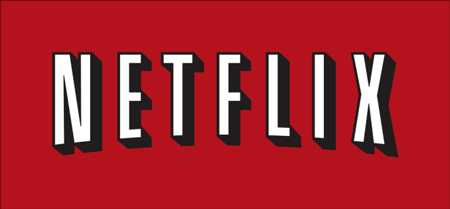Can the streaming video giant withstand the loss of studio content as the studios begin launching their own competitive services? Center Director Jeffrey Cole explores the field of play.
______________________________
By Jeffrey Cole
In the seven years since Netflix spun off its red envelope business (DVDs by mail) into a separate company with the silly name Qwikster and focused on a streaming business that kept the Netflix name, the company has turned into a global behemoth. (The fortunes were not so kind for Qwikster, which lasted less than a month.)
 The 2011 split of Netflix was initially thought to be a massive blunder that cost the company 1,000,000 subscribers and 90 percent of its value. However, it was a brilliant and prescient move that established the pay streaming business. Today, Netflix has over 140 million subscribers worldwide in almost every country (except China, it is still trying there), and a market cap of between 135 and 180 billion dollars, which at times rivals that of Disney.
The 2011 split of Netflix was initially thought to be a massive blunder that cost the company 1,000,000 subscribers and 90 percent of its value. However, it was a brilliant and prescient move that established the pay streaming business. Today, Netflix has over 140 million subscribers worldwide in almost every country (except China, it is still trying there), and a market cap of between 135 and 180 billion dollars, which at times rivals that of Disney.
With its massive budgets and promises of creative freedom, Netflix has attracted some of the best talent in Hollywood to its streaming channel. Shonda Rhimes moved from her dominating role at ABC to Netflix.
Shortly thereafter, Fox’s prolific producer Ryan Murphy followed. Within a few short years the channel has become dominant in stand-up comedy. Old comedy legends such as Jerry Seinfeld and David Letterman have moved over as well. Netflix has invested heavily in multi-part dramas with such signature programming as House of Cards, The Crown, Stranger Things, Black Mirror, and much, much more. It has also become the place that brings old comedies — such as Full House, Arrested Development, and One Day at a Time — back to life.
As consumers cut the cord and free up about $90 a month to spend on television, or cord shavers free up $45 a month, Netflix has a lock on $10.99 of that spend. It even captures that $10.99 from full cable subscribers who don’t touch the cord.
_________________________________________________________________________________________________
There is no doubt that Sony and Viacom (Paramount, as well as MTV, Nickelodeon and Comedy Central) are calculating whether they have enough old and new content for their own subscription video service. If not, they could combine with each other or someone else (this was the original vision for Hulu).
_________________________________________________________________________________________________
It must drive Hastings and Netflix crazy that Netflix commanded $15.95 a month for a service that delivered five DVDs of films that were recently in the theaters. In contrast, today for $10.99 a month, it provides a service of unlimited recent films, massive amounts of old television, and all the original programming that $9 billion a year can produce. If the red envelope business was worth $16 a month, then the Netflix of today should be worth $40 to $50. The problem is that it started at $8 a month and can only be raised a dollar or so a year.
It may take Netflix 20 to 30 years to get to its real value.
The studios change their opinion about Netflix
Netflix is firing on all cylinders, financially and creatively. That is why it is now the target of all the studios in Hollywood. Disney, Warner, Paramount, Fox, Universal, and Sony want the free ride to end. Netflix has built its business off their backs. Now, the studios’ plan is nothing less than the full disaggregation of Netflix.
Netflix built its massively successful channel off the talents and programming of the six studios (soon to be five) that have supplied them with recent theatrical films, old and recent television shows, as well as writers and producers to make original programming. It was good for the studios to find a lucrative place to distribute their old and current programming, but by doing so they were contributing to the creation of their greatest competitor.
It is the enriching of Netflix that allowed it to strip ABC of Rhimes and Fox of Murphy. Netflix (along with Amazon and less so with Hulu) has been able to pick and choose from all studio content, both theatrical and television, and decide what to buy. When you buy the good stuff (Netflix still buys the lesser stuff, but pays less) you can create a great channel. This is what Netflix has done. Now the studios recognize that the channel they supported and sustained has grown so big it has become an existential threat.
The studios’ plan is to strip Netflix of anything but the content it creates. They will start by refusing to sell their old theatrical films and television programs to Netflix. That will be followed by a refusal to make original content for the channel.
The total programming offerings of Netflix have grown by being the sum total of content aggregated from all the studios and other outside forces. Now, Netflix will be disaggregated and left with what it makes itself or can buy from other sources outside the studio system (foreign channels, PBS and independents).
The plan is to starve Netflix (and to a lesser degree Amazon Prime) of much of its content.
New competitive streaming services
Last year, Disney announced that it would stop sending its feature films to Netflix. It had tired of building Netflix’s reputation and revenues off of Marvel, Lucasfilm, Pixar, and Disney Animation. It was easy to see that this was the first step toward Disney building its own Direct-to-Consumer (DTC) subscription channel. Shortly thereafter Disney announced that it will start its own direct competitor to Netflix. It will be launched in late 2019.
In all likelihood, Disney will also pull its television programming from Netflix as well. This means no old or current ABC series or Disney Channel productions, and, now that Disney has bought Fox Television, none of that content either, including National Geographic.
One third of Hollywood studio content will no longer will be seen on Netflix.
_________________________________________________________________________________________________
Netflix is firing on all cylinders, financially and creatively. That is why it is now the target of all the studios in Hollywood. Disney, Warner, Paramount, Fox, Universal, and Sony want the free ride to end. Netflix has built its business off their backs. Now, the studios’ plan is nothing less than the full disaggregation of Netflix.
_________________________________________________________________________________________________
Warner Media, under its new AT&T ownership, has announced that it will also launch its own DTC channel. That means the loss of yet another studio’s content (that’s three out of six), as well as Turner, old HBO series, and made-for-television movies.
Viewers will no longer be able to catch an old ABC or HBO series on Netflix.
There is no doubt that Sony and Viacom (Paramount, as well as MTV, Nickelodeon and Comedy Central) are calculating whether they have enough old and new content for their own subscription video service. If not, they could combine with each other or someone else (this was the original vision for Hulu).
Within two or three years, there may be no studio content, old or new, on Netflix.
The viewer will be the biggest loser
For $10.99 a month, viewers have been able to watch an extraordinary array of programming from six studios that have generations of experience making popular entertainment. For that monthly fee, one can find much of the recent history of ABC, CBS, NBC, Fox, HBO, Turner and many cable series, as well as every studio’s theatrical films.
Netflix’s enormous international success is because it has collated an extraordinary collection of Hollywood programming for such a small monthly fee.
Soon, Netflix viewers who want to maintain the same array of content that they have had access to will have to subscribe to four or five OTT channels. Will the consumer spend $50 or more for OTT channels to essentially restore what they were getting for $10 a month for Netflix (and for Amazon which to many subscribers seems free because they buy Prime for the shipping)?
While the consumer will be the loser, it is unclear if the content providers will be the winners. As Netflix is stripped of much of its content, it will have to rely more and more on its original programming. Already, Netflix spends $9 billion a year on content, and next year that will rise to $11-13 billion.
Netflix will suffer from these moves. It remains to be seen whether the new players will profit off that suffering or whether the entire eco-system will be weakened.
The arms race among Direct-to-Consumer video services has begun.
____________

Jeffrey Cole is the founder and director of The Center for the Digital Future at USC Annenberg.
To subscribe to these columns, send an email to [email protected].
See all columns from the Center.
November 7, 2018

